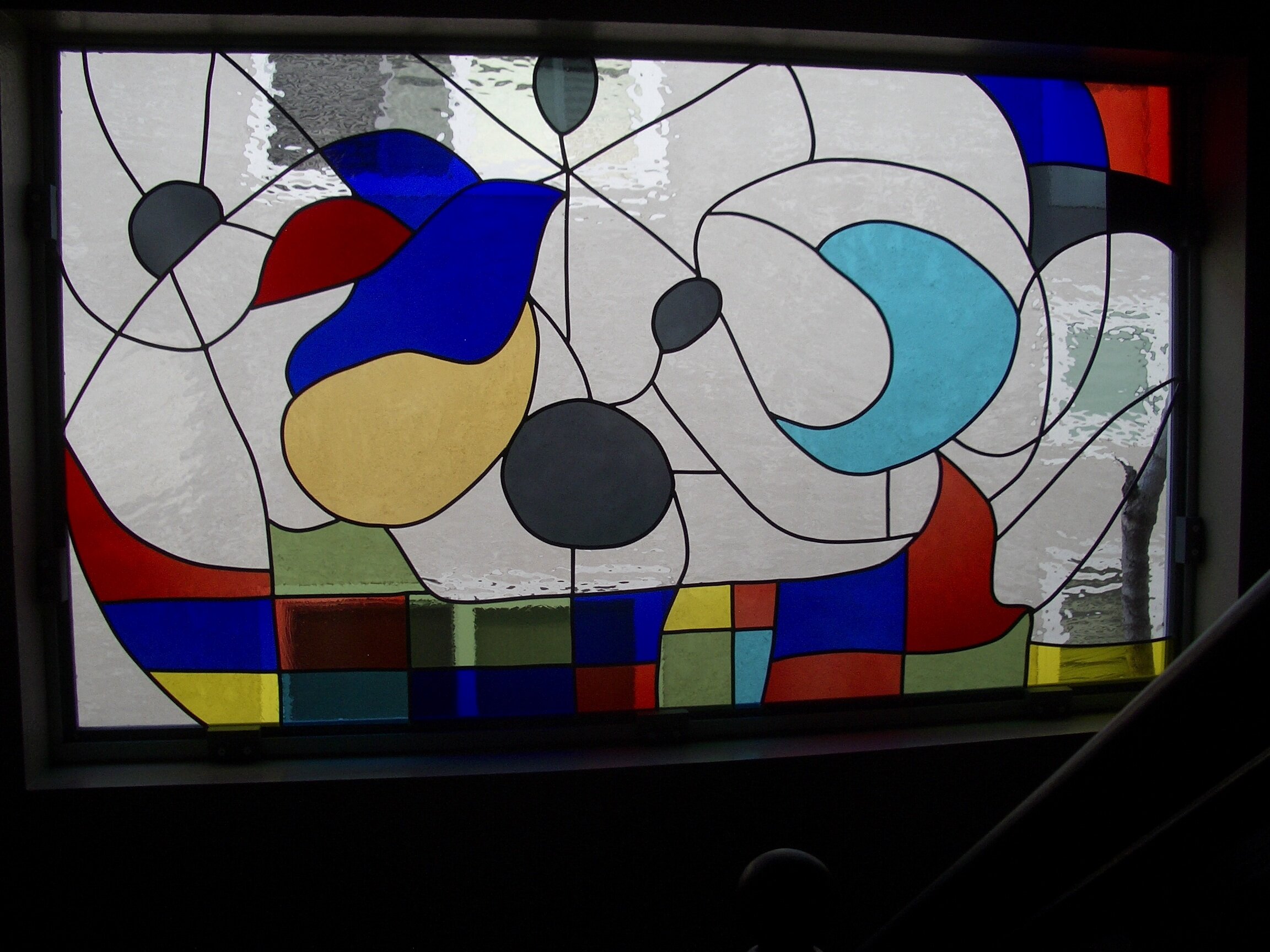The Art of Stained Glass
Stained glass is unique among the arts because of its direct relationship with light. When light passes through colored glass, different values, textures, and densities combine to form an extraordinary palette. Stained glass artisans often refer to this process as “painting with light”, and must make careful decisions when designing and selecting the glass for their stained glass windows.
The first stage in the production of a stained glass window is to make an accurate template of the window design. This is often referred to as the “cartoon” drawing. The designer must take into account the design, the structure of the window, and the nature and size of the glass available.
The cartoon is numbered and divided into a patchwork, providing a template for each small glass piece. The exact position of the lead which holds the glass in place is also noted, as it is part of the calculated visual effect. Each piece of glass is selected for the desired color and cut to match each template. An exact fit is ensured by "grozing" the edges with a tool which can nibble off small glass pieces.
Once the glass is cut, the pieces are assembled by slotting them into H-sectioned lead cames. All the joints are then soldered together. The glass pieces are prevented from rattling and the window is made weatherproof by forcing soft oily cement between the glass and the lead cames.
Stained glass has been produced since ancient times. This is a time honored process that is rooted in tradition. Today, whether the artist is creating modern or traditional art glass, the basic techniques remain similar. It is very rewarding to continue this practice in the same way that it has been done for centuries. Based on her years of training and experience in Europe, our stained glass instructor, Lisa Maywood, can teach you how to design, cut and construct your own 2-dimensional leaded glass panel.

